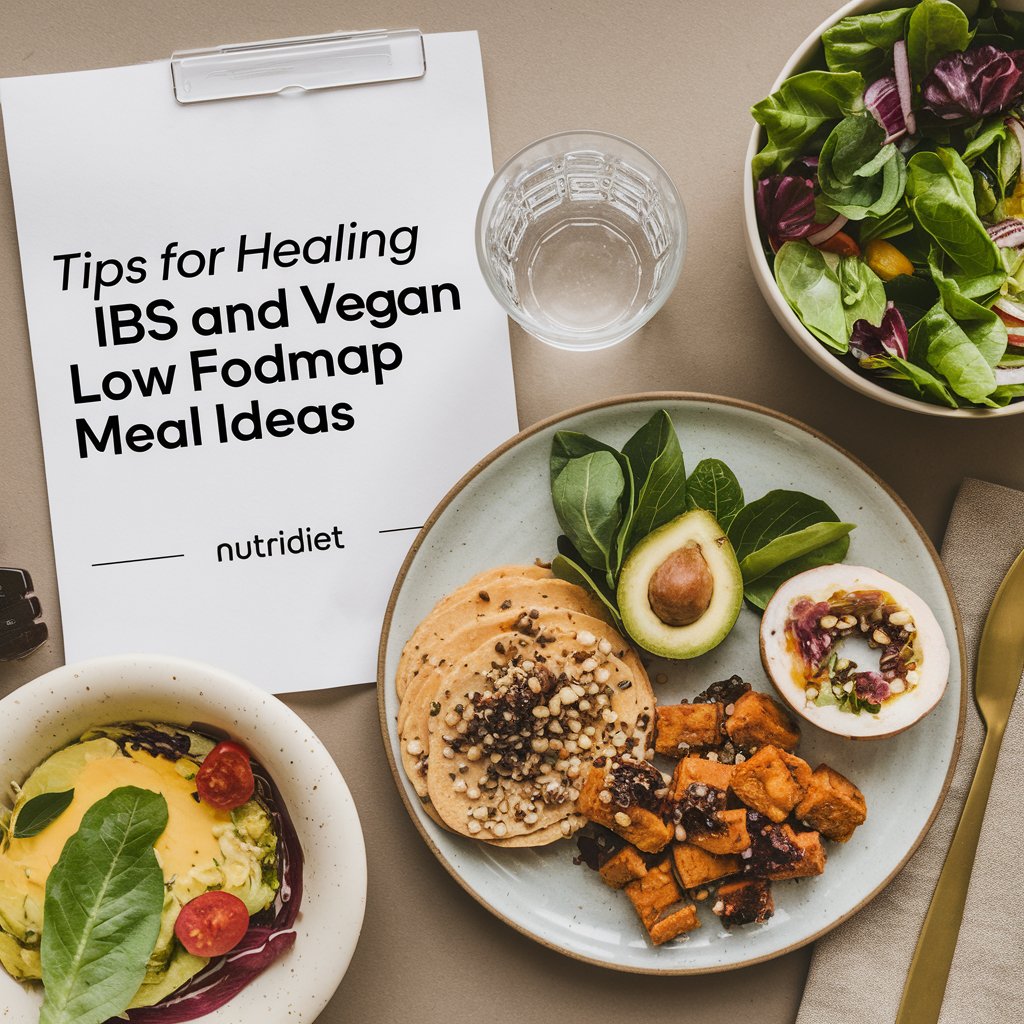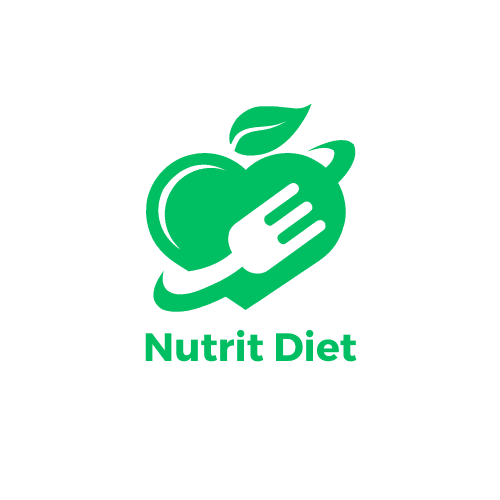
FODMAP is an acronym for four types of short-chain carbohydrates. And these carbohydrates are found in all kinds of foods, including a lot of nutritious foods. But they can make those foods harder to digest, which then causes uncomfortable symptoms, like gas and bloating. 30-days low fodmap meal can be very effective for IBS patients or for people facing digestive system issues.
Low FODMAP Diet
As you probably guessed, a low FODMAP diet is a temporary dietary regime that strictly limits the amount of FODMAPs you eat. It was developed by Sue Shepard and Peter Gibson at Monash University in Melbourne, Australia, and was used to treat what’s known as irritable bowel syndrome, or IBS. It has been clinically shown to work on average for three in four patients. Case studies and anecdotes have seen it now emerging as a useful treatment tool for numerous other health conditions related to gut health, which turns out to be most of them. FODMAPs are found in a huge range of foods. So cutting them out can be extremely difficult without assistance. Because you have to work out what foods you eat that contain large amounts, and B, you have to work out how to replace those foods appropriately. So you have something to eat.
Categories of fodmap diet
- oligosaccharides such as fructans we need to limit these foods for example wheat-based pasta cabbage beans etc.
- disaccharides such as lactose so again we need to limit these now this doesn’t mean stop having your dairy products completely this means go for lactose-free versions of whatever dairy products you like. That way you’re still getting your important calcium intake however please do avoid processed cheese and low-fat cheese.
- monosaccharides: like fructose now this doesn’t mean stop having fruit completely but you do need to stop having things like honey mangoes sugar snaps and fructose sweeteners.
- polyols you need to avoid them or limit them as much as you can these include things like mannitol sorbitol xylitol you may have seen them in sugar-free gum sugar-free candy and also sugar-free medicine but please don’t stop the medicine without speaking to your healthcare professional first if you do see it talk to them there might be versions that don’t have these in them also stone fruit you need to avoid these as well such as apricot and plums any stone fruit so hope that was quite simple and easy to understand.
You need to avoid or limit those four categories of carbohydrates as much as you can.

30-day ibs diet plan: What kind of carbs can you eat?
Fodmap diet now before we begin please remember Carbohydrates that can be eaten in the Low FODMAP Diet.
So for breakfast, you can have things like puffed rice and cornflakes. And if you love porridge you can still have oats. You can have rice and potatoes. It’s completely fine to cook them however you like. It’s fine if you want another type of carbohydrate, you can also have buckwheat, you can have polenta, and quinoa delicious in a salad. Fruit and vegetables are also a good source of carbohydrates and a great source of fiber. In addition to these please remember you need to try and avoid things like alcohol caffeine spicy food and fatty foods, all of these are notoriously bad for IBS symptoms. Now in addition to these also set aside some self-care time for yourself so you can relax and stress less and do some things that are going to help reduce your stress.

Stages of Fodmap diet
Restriction
It will take about 30 days for you to see results and by results mean the reduction of those IBS symptoms. So, it’s super important when you start the diet to keep a list. Keep a diary of what you’re eating and what kind of symptoms you’re experiencing and then you can take a look at that diary later on as go through the stages so when you’re doing stage one the restriction you can either cut out all four categories of the Fodmap diet or cut out one category at a time and see how you get on. Remember to keep that list and make a diary because this is a bit of an experimental stage. So let’s say you’ve done your four weeks and you’ve seen no improvement. You’ve seen no difference at this point you need to go back and speak to your dietitian and get some further advice. Also, remember to look out for the following symptoms if you get any of these kinds of symptoms you need to stop the diet and go back to your healthcare professional as soon as possible.
These include things like blood in your stools, low iron levels, you might experience tiredness, extreme tiredness, this could be a sign of low iron levels also any weight loss unexpected weight loss or loss of appetite, and lastly, any change in your symptoms. So if you’ve got diarrhea or constipation it suddenly becomes a lot worse. Any of these kinds of symptoms you need to go straight back to your healthcare professional. Let’s say you’ve got to 30 days and your symptoms have improved, but you’ve got none of the red flags, we just spoke about. Now it’s a kind of an experimental stage because we can’t stay in stage one forever limiting all those foods. Because we do need certain types of foods, So this is when we start to look at reintroduction.

Reintroduction
Stage two is the reintroduction stage. So what we need to do is to look at that diary and bring in food slowly what we call challenge foods. So certain foods that you think you know might be making my IBS worse you can try challenging it. So you can try it for about two weeks if it does flare up your IBS or if it makes your symptoms worse. Then you know 100 you’re sure that food you need to try and avoid because it makes your IBS symptoms worse but there might be certain foods that you find with and you can add them to the good list.
But remember you can only introduce one challenge food at a time because it’s not going to be a fair test if you suddenly try three to four different foods. You’re not going to know which one’s actually causing the symptoms. Which one aggravates or flares up your IBS. So one at a time, now the reintroduction stage is quite time-consuming. Food at a time but remember before you go to the next challenge food you need to go back to your baseline. So you need to go back to stage one where you’re avoiding almost everything for three days before trying another food. Because you must go back to your baseline when your symptoms were good and non-existent hopefully, before you start another challenge food. Hope that makes sense moving on to stage number three.
Personalization
Now remember if you’re going to be avoiding all the foods that you love, this diet is going to get very boring soon. You’re just going to revert to your old ways this is where personalization comes. This doesn’t mean that you can’t ever eat the food that you love because there are ways around it. So in this stage, you’re going to decide on which food you’re happy to have and how much of it you can have, that you can tolerate before it makes your IBS symptoms worse. You’re going to make that decision slowly it’s not something you can do quickly.
Tips for healing IBS and vegan low FODMAP meal ideas

IBS, or irritable bowel syndrome
It’s a daily battle with our digestive systems, and for others, it’s dealing with the occasional but severe flare-up when we’re stressed. Whatever your experience is, today I’m sharing tips for healing your IBS and vegan meal ideas that are IBS-friendly.
Common symptoms of IBS
Stress One of the major triggers for IBS symptoms is stress.
Some techniques to ease stress
So here are some techniques that can be used to help ease the stress. One of these strategies is meditation. And if the idea of sitting silently and thinking about nothing sounds overwhelming or boring, then don’t worry because meditation is quite the opposite. It asks you to be fully present and to just experience everything that you’re feeling and you’re thinking, whether it’s your stomach growling or your heart beating quickly. If the idea of a formal meditation sounds boring or something you’re not interested in, you can still incorporate meditation into your life in other ways. You can like to enjoy a meditative cup of tea. Take the time to prepare a nice cup of tea and then go and find somewhere quiet to enjoy it. Before drinking the tea, inhale the aroma, and observe the quality and color of the tea. Another instant de-stressor is to spend a little time outside in nature. Being in nature reminds us that there’s an entire world outside of whatever’s going on in one’s head at the moment, and that gives perspective, which instantly makes someone feel calmer.
Probiotics
One of the strategies that has helped IBS symptoms is taking a daily probiotic supplement. Of course, physicians recommend eating a diet that’s rich in probiotic foods such as fermented foods. But when our digestive systems are in distress, sometimes our bodies need a highly concentrated source of probiotics taken regularly. But if you are vegan, you do want to make sure that you read the labels on the probiotic supplements you buy because a lot of probiotics are derived from dairy so they’re not vegan.
Trigger foods
For some people, specific foods can trigger IBS symptoms. for me, before becoming vegan, it was dairy products. Specifically, ice cream, which I loved, and it’s no surprise because I’m highly lactose intolerant. If you want to know which foods trigger your symptoms, I recommend keeping a food diary for at least a week. Write down everything you eat – every meal, every snack, every nibble. Write down the time at which you eat it and also record any symptoms you have throughout the day, including the time as well. After a few days, you’ll be able to start identifying foods that trigger the symptoms and you can gradually eliminate them from your diet and see how you feel. Once you’ve eliminated the triggering food or foods from your diet, after a few weeks, you can experiment with gradually incorporating them back into your diet, one by one. And you might learn something about your body. It might be that chocolate triggers your symptoms but only if it’s milk chocolate, or only when you’re stressed out, or only when you’re on your monthly cycle. So you can still enjoy your favorite foods but be smart about it.
Fiber
One of the reasons you might be experiencing IBS symptoms is that you’re not eating enough dietary fiber. Fiber is what keeps our digestive tracts in regular working order. But unfortunately, most Americans do not eat enough fiber daily. One thing to keep in mind is that the type of fiber you might need to add to your diet may depend on the type of IBS symptoms you have.
There are two types of fiber:
Soluble Fiber: Soluble fiber slows things down in your digestive tract. So it’s a great solution to your diet if you experience–everyone’s favorite word– diarrhea. Some favorite sources of soluble fiber are oats, butternut squash, and chia seeds.
Insoluble fiber: This is found in vegetables, legumes and beans, and whole grains, helping to quicken things up in the digestive tract. So it is a great addition to your diet if you are constipated. In either case, if you currently aren’t eating a lot of fiber, it is recommended to add the fiber to your diet gradually and slowly. Because if you’re eating like 15 grams right now and then you suddenly go up to 45 grams of fiber per day, you’re going to have a hard time adapting and you’re probably going to have a lot of gas and bloating and cramping which is obviously what you want to avoid in the first place.
Also read about: Mushrooms on Low Fodmap Diet.
Low FODMAP For IBS Patients

The final tip for healing your IBS is to experiment with a low FODMAP diet. A typical low FODMAP diet will eliminate all FODMAP foods for a certain time and then you gradually reintroduce these categories of foods, one by one. There are tons of resources on the internet about low FODMAP diets and which foods to eat and which to avoid. But a lot of these diets call for meat and eggs, which are low in FODMAPs.
Some vegan low-FODMAP meal ideas
- First, let’s talk about breakfast because there are certain things you might need to adjust in your diet. There are a fair number of fruits as well as most wheat-containing grains that are high in FODMAPs. So, you’ll want to swap out apples and mangoes, for instance, which are high in FODMAPs, with berries and certain citrus fruits, which are low in FODMAPs. You can easily replace wheat-containing grains with oats, quinoa, millet, and other types of pseudo-grains that don’t contain gluten.
- Now for some lunch and dinner ideas. First, take a tempeh rice bowl. Tempeh is made from fermented soybeans and is a low FODMAP food, but certain other soy products, including soybeans and soy milk, are high in FODMAPs.
The science behind the difference is a little confusing, but just keep in mind that tempeh and firm varieties of tofu are low in FODMAPs and good for an IBS diet.
Recipe of Low Fodmap meals
For this tempeh rice bowl, start by marinating the tempeh. This marinade is packed with delicious, flavorful ingredients that I’m sure you will love. Steam the tempeh for about 10 minutes before marinating because it helps remove some of the characteristic bitter taste. You’ll marinate the tempeh pieces for two hours or up to overnight, and after marinating the tempeh, you’ll bake it in the oven at 375 degrees Fahrenheit for 12 to 15 minutes. Now for the veggie slaw in this rice bowl. I’m using a combination of low FODMAP vegetables but if you want to customize it to your taste or whatever you have on hand, be sure to consult a low FODMAP food list. To dress the slaw, I made a tahini-sesame dressing that really complements the flavors of the tempeh marinade. and for an extra crunch factor, finish it with a small handful of sesame seeds and sunflower seeds. Seeds are a great low-FODMAP food, but you just don’t want to overdo it. To serve, mix some cooked brown rice with the vegetable slaw and serve the tempeh on top. This final dish is for a stuffed acorn squash. Luckily most types of winter squash are low in FODMAPs, and this one makes a satisfying dinner. You’ll start by slicing an acorn squash in half. This can be a bit difficult.

To impart some flavor and get the squash nice and browned, brush the flesh of the squash with olive oil along with salt, pepper, and fresh thyme. You’ll bake the squash in the oven, flesh side down, for 40 minutes or until tender. For the stuffing, use a base of quinoa, which is low in FODMAPs. And for a bit more protein, use some canned brown lentils. Most legumes are high in FODMAPs, but following a low FODMAP diet doesn’t mean that you can’t ever have any legumes. Certain legumes such as lentils are lower in FODMAPs than others, such as kidney beans which are high in FODMAPs, and you can have these lower FODMAP legumes in small quantities, like a quarter cup. Also, canned lentils and beans have lower FODMAP values than the dried and cooked variety. To flavor the quinoa and lentils, add some low-FODMAP ingredients, including olives, pine nuts, spices, herbs, lemon juice, and tahini.
Conclusion
Now know all about the different foods you can and can’t have. You know all about how to introduce the diet and how to slowly personalize it too. So, you are a Fodmap pro. So, tell your friends tell your family your loved ones tell everyone. Hope you found this information helpful and hope anyone who’s found this content will take benefit from it.
FAQs
What is a low Fodmap diet?
A low FODMAP diet is a temporary dietary regime that strictly limits the amount of FODMAPs you eat.
What is a low Fodmat diet plan?
A low Fodmap diet plan is based on some carbohydrate-free foods that are hard to digest and cause digestive problems.
Is there any fruit that comes into low fodmap?
Bananas are low in fodmap and they can be the best choice for IBS patients.
Which food triggers IBS?
Various foods quickly trigger IBS like alcohol, caffeine, and high fodmap.
What are good vegetable options for IBS patients?
A variety of vegetables are effective for IBS patients. Leafy green vegetables, cucumber, green beans, potatoes, and root vegetables all are very effective options for IBS patients.
How to prevent IBS?
To prevent IBS avoid the use of trigger foods and eat small meals, avoid fatty foods, do regular exercise, and overcome stress levels. Also, adopt a low Fodmap meal plan and regularly consult with a dietician.





Pingback: Mushrooms on a Low FODMAP Diet: Benefits, Risks, and Safe Options – Nutrit Diet
Pingback: Is Corn Low-FODMAP? Exploring Corn and its Varieties - Nutrit Diet